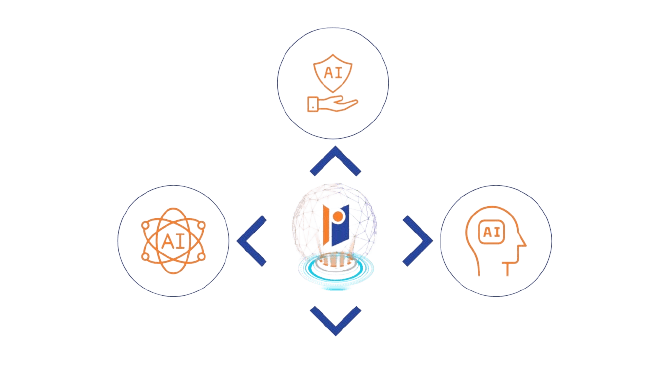Unlocking AI Potential: Why LLMs Aren’t the Only Key to Success
Statistical Models | Generative AI | Extractive AI | Knowledge Graphs
In the race to harness the power of artificial intelligence (AI), many businesses have turned to large language models (LLMs) to drive innovation and efficiency. However, while LLMs like GPT-4 have made significant strides in natural language processing, they are not the panacea for all AI challenges. There are scenarios where statistical analysis or extractive AI proves to be more valuable. In this blog post, we’ll explore why a diverse approach to AI, integrating multiple model types, can unlock greater potential for businesses and lead to a dramatic reduction in development costs and total cost of ownership.
The Limitations of Large Language Models
LLMs are powerful tools for tasks that involve understanding and generating human language. They excel in areas such as customer service automation, content creation, and sentiment analysis. However, they are not without limitations:
- Cost and Complexity: Training and deploying LLMs can be resource-intensive, requiring significant computational power and storage.
- Bias and Inaccuracy: LLMs can sometimes generate biased or inaccurate content, which can be detrimental to a business’s credibility.
- Lack of Domain-Specific Knowledge: While LLMs are generalists, they may lack the precision required for specific industries or applications where domain-specific expertise is crucial.
The Power of Statistical Analysis
Statistical analysis remains a cornerstone of data-driven decision-making. It involves using mathematical techniques to analyze and interpret data, uncover patterns, and make predictions. This approach is particularly valuable in scenarios where:
- Data Trends Need to Be Identified: Statistical methods can identify correlations and trends that are not immediately apparent, providing insights into customer behavior, market trends, and operational efficiencies.
- High Precision is Required: For industries like finance and healthcare, where accuracy is paramount, statistical models can provide more reliable results than generalized LLMs.
Extractive AI: Focusing on Relevant Information
Extractive AI models are designed to extract specific information from large datasets, making them ideal for tasks that require pinpoint accuracy and relevance. They shine in use cases such as:
- Data Mining: Extractive AI can sift through vast amounts of unstructured data to find relevant information, helping businesses make informed decisions.
- Information Retrieval: These models are adept at retrieving precise answers from documents, making them invaluable for legal, medical, and research-oriented fields.
Knowledge Graphs: Surfacing Knowledge Based on Facts
Knowledge Graphs provide a structured representation of factual information, connecting entities and concepts in a meaningful way. This approach is particularly advantageous when:
- Fact-Based Information is Crucial: Unlike LLMs, which infer meaning from relevance and relatedness, Knowledge Graphs surface knowledge based on verified facts, ensuring accuracy and reliability.
- Complex Relationships Need to Be Understood: Knowledge Graphs excel at capturing and representing the intricate relationships between entities, making them invaluable for fields like healthcare, finance, and academia.
- Enhanced Data Integration: By integrating diverse data sources, Knowledge Graphs can provide a more holistic view of information, aiding in comprehensive decision-making.
The Case for a Holistic AI Partner
To truly maximize the potential of AI, businesses should consider partnering with AI experts who have experience in leveraging LLMs, statistical analysis, extractive AI, and Knowledge Graphs. Here’s why:
- Tailored Solutions: An AI partner with diverse expertise can tailor solutions that align with a business’s specific needs, ensuring the most effective model is used for each task.
- Cost Efficiency: By leveraging the right AI model for the right job, businesses can avoid unnecessary computational costs and reduce overall development expenses.
- Enhanced Accuracy and Reliability: A holistic approach ensures that the strengths of each AI model type are utilized, leading to more accurate and reliable outcomes.
While LLMs have made impressive strides in the AI landscape, they are not the only tools available to businesses. Statistical analysis, extractive AI, and Knowledge Graphs offer valuable alternatives that can enhance precision and efficiency in specific scenarios. By partnering with AI experts who have experience across all these model types, businesses can unlock the full potential of AI, leading to significant cost savings and improved outcomes. Embracing a diverse AI strategy is the key to staying competitive and innovative in today’s fast-paced world.

